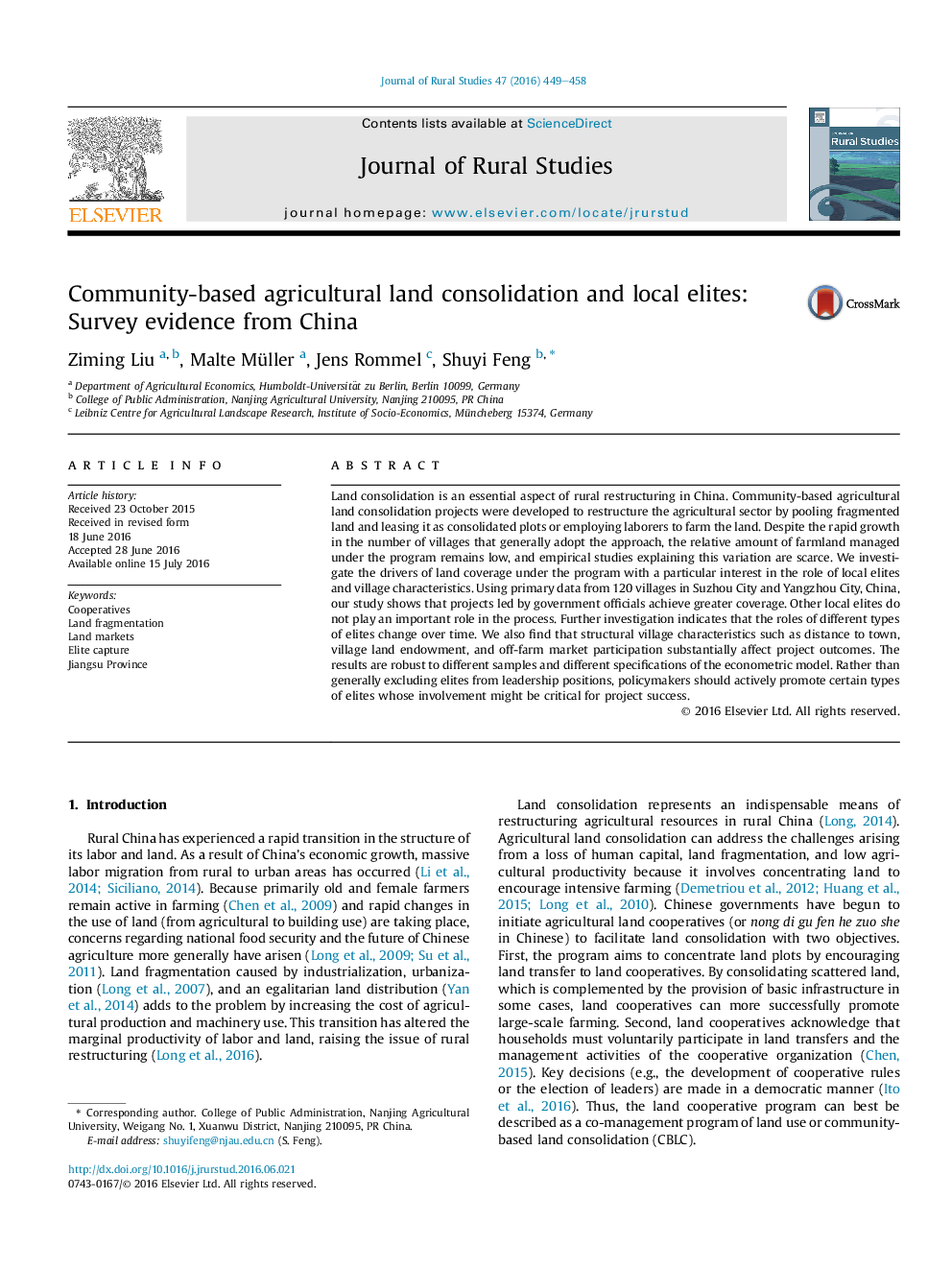| کد مقاله | کد نشریه | سال انتشار | مقاله انگلیسی | نسخه تمام متن |
|---|---|---|---|---|
| 6460152 | 159959 | 2016 | 10 صفحه PDF | دانلود رایگان |
- Village level forces of community-based land consolidation are analyzed.
- Distance to town, off-farm employment and land endowment affect consolidation.
- Local elites can positively improve the consolidation process.
- The effect of local elites may change over time.
- Local elites shouldn't be excluded per se, and certain villages targeted in priority.
Land consolidation is an essential aspect of rural restructuring in China. Community-based agricultural land consolidation projects were developed to restructure the agricultural sector by pooling fragmented land and leasing it as consolidated plots or employing laborers to farm the land. Despite the rapid growth in the number of villages that generally adopt the approach, the relative amount of farmland managed under the program remains low, and empirical studies explaining this variation are scarce. We investigate the drivers of land coverage under the program with a particular interest in the role of local elites and village characteristics. Using primary data from 120 villages in Suzhou City and Yangzhou City, China, our study shows that projects led by government officials achieve greater coverage. Other local elites do not play an important role in the process. Further investigation indicates that the roles of different types of elites change over time. We also find that structural village characteristics such as distance to town, village land endowment, and off-farm market participation substantially affect project outcomes. The results are robust to different samples and different specifications of the econometric model. Rather than generally excluding elites from leadership positions, policymakers should actively promote certain types of elites whose involvement might be critical for project success.
Journal: Journal of Rural Studies - Volume 47, Part B, October 2016, Pages 449-458
